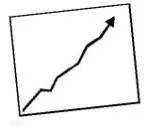![]()
1
Simply Spa
More and more people are embracing a more natural, holistic, and fulfilling lifestyle through spa living. They look for simple pleasures that spas offer. The motivation for people to go to spas has shifted from not only seeking relaxation and de-stressing but also to achieving and maintaining health and wellness.
dp n="19" folio="2" ?
A Spa Lifestyle: Back to Basics
A working mother needs some quiet time for herself. A couple wants to revive their flawed marriage. A corporate CEO wants to rediscover spirituality. A bride-to-be wants a night of pampering with her friends. A teenager is troubled by acne. A baby boomer wants her wrinkles to disappear. A hospice patient needs some TLC in his dying moments. A pregnant woman wants to ease her back pain. An alcoholic decides to become sober.
Where can all these people go for comfort, pampering, and wellness? Spas. People seek spas for various reasons including
• Pampering and pleasure
• Stress management
• Health and wellness
• Fitness
• Weight loss
• Spiritual reconnection
• Anti-aging treatments
• Relaxation and entertainment
Spas offer a wide variety of services to meet diverse needs. Swedish massage, Japanese Shiatsu, Thai massage, electrolysis, European facials, acupuncture, Dead Sea salt scrubs, Moor mud wraps, thalassotherapy, aromatherapy, reflexology, haircutting, manicures, microdermabrasion, endermologie, Reiki, Botox, cellulite firming, weight loss, tanning, meditation, yoga, Tai Chi, tooth whitening, Ayurveda herbal bath, and state-of-the-art fitness programs with personal trainers are just a handful of treatments offered at spas, which have become popular places for healing.
The International Spa Association (ISPA) defines the “ten domains of Spa,” or segments of the industry, as:
1. “The Waters”
2. Food, nourishment, diet, and nutrition
3. Movement, exercise, and fitness
4. Touch, massage, and bodywork
5. Mind/body/spirit
6. Aesthetics, skin care, natural beauty agents
7. Physical space, climatology, global ecology
8. Social/cultural arts and values, spa culture
9. Management, marketing, and operations
Smart Tip
With less time available for rest and regeneration, people are seeking places to revive themselves, to gain relief from overindulgence and overwork. Spas are the answer.
10. Time, rhythm, and cycles
The shape of spas is continually in a state of flux. Defining the kinds of spas in existence today can get a little tricky because of the variety of treatments offered. Consequently, categorizing spas is difficult.
For the sake of clarity, spas in this book have been loosely placed in four categories:
1. Day spa. A place to spend the day and get massages, facials, and body treatments, among other healing and beauty services. Clients don’t spend the night in these facilities, hence the name. Examples of day spas include tanning salons, hair and nail salons, mobile spas, and spa parties.
2. Destination spa. A destination spa is one where clients come for relaxation, healing, and beauty treatments. These spas offer all-inclusive treatments ranging from yoga to weight-loss programs. Clients may spend anywhere from one day to a week (or even longer) at destination spas. Rates can be from $500 to $25,000 a week, or more. Examples of destination spas include resort spas, hotel spas, and cruise ship spas.
3. Medical spa. Here traditional hospital medicine and alternative therapies cross paths. Medical spas include dental spas, Botox treatment centers, wellness centers, and hospital-based medical centers.
4. Spiritual spa. A spiritual spa connects people on a spiritual level. Spiritual spas include eco holistic spas, meditation centers, Reiki healing centers, spa retreats, and yoga centers.
More and more people are returning to age-old tested treatments like Feng Shui, acupuncture, and music therapy for comfort and wellness. They are reconnecting with each other through the power of natural healing offered by spas. The spa life is back to basics, reconnecting with one’s inner self and embracing a more natural, holistic, and fulfilling lifestyle. Today, a spa lifestyle has come to mean a yearning for the simple life, polished by current technological advancements.
Smart Tip
The modern spa is descended from the ancient practice of bathing in hot springs and mineral waters.
A Little Spa History
Spa-going and massage therapy are often described as new cultural trends, but in fact, they have been practiced for centuries. The practice of massage, which is a central part of spa living, dates back to the Chinese, who provide the earliest mention of massage in a book dating to about 2700 B.C.: “Early morning stroking with the palm of the hand, after the night’s sleep, when the blood is rested and the tempers relaxed, protects against colds, keeps the organs supple and prevents minor ailments.” Egyptian tomb paintings depict people being massaged. Some 3,000 to 5,000 years ago the Hindus developed Ayurveda, which means “the science of long life.” As the traditional Indian system of medicine, it placed great emphasis on the therapeutic benefits of massage with aromatic oils, herbs, and spices. Hippocrates, considered the father of modern medicine, spoke of massage in the 4th century B.C.: “A physician must be experienced in many things,” he wrote, “but assuredly in rubbing, for rubbing can bind a joint that is too loose, and loosen a joint that is too rigid.”
Cleansing Waters
Water has always been seen as a cleansing and healing agent. The word spa is from the Latin salus per aquam, which means “health from water.” Spa is also the name of a small village in Belgium where hot mineral springs were discovered by the ancient Romans and used by their soldiers to treat the aching muscles and wounds from battle. According to Chinese Feng Shui, when the water element is balanced, happiness prevails in one’s life’s journey and one has the ability to go with the flow. When it is not in balance one experiences dissatisfaction and has a tendency to hold on to things. In the Christian religion the Baptism ceremony uses water to cleanse the believer. Early spa use was largely male. Today however, more women frequent spas.
Social bathing was an important cultural process practiced by Mesopotamians, Egyptians, Minoans, Greeks, Chinese, Indians, and Romans whenever they sought health and relief from pain and diseases. Homer and other Greek writers indicated that as early as 500 B.C. the Greeks favored a variety of baths, from hot water tubs to hot-air baths, or laconica. From the small Greek laconica grew the Roman balneum and finally the extravagant Roman thermae, from the Greek word for “heat.” Thermae also means a large-scale spa. Emperor Agrippa designed and created the first thermae in 25 B.C. The thermae later became a central entertainment complex offering sports, restaurants, and various types of baths, the equivalent of a modern day, luxurious destination spa. Although Romans were not the first ancient civilization to indulge in social bathing, they were definitely the civilization that perfected it.
It is not known when the Romans used the first public bath, but during the reign of Augustus Caesar from 27 B.C. to 14 A.D., there were approximately 170 baths throughout Rome. By 43 A.D., the Roman public had taken on a different view of baths and bathing. It began to view baths as a way of providing rest and relaxation to all people, not just those weary of war.
With the fall of the Roman Empire came the demise of the Roman bath. But over the centuries, baths and spas eventually spread throughout Europe, becoming increasingly elaborate. Across the ocean, in the still undiscovered “New World,” native cultures were enjoying the benefits of hot spring therapy. Native Americans bathed in mineral springs to enhance their physical and spiritual health, and these baths played an important role in the social structure of their communities.
In 737 A.D., Japan’s first onsen, or hot spring, opened. Saunas began appearing along the Baltic in Finland as early as 1000 A.D., inaugurating a rich Finnish spa-going tradition. The Ottomans were famous for their hammam (public bathhouse), the crowning example being the Baths of Roxelana built in 1556.
By the dawn of the 20th century, spas began to be molded into a different shape. Scientific clinics and public hospitals replaced the spa environs, and existing spas eventually turned into vacation lodges. The original association of spas with water faded.
The modern day spa is an interesting combination of ancient traditions and modern technological wonders. Today, the value of prevention, anti-aging treatments, healthy lifestyles, alternative medicine, and relaxation have been rediscovered and appreciated anew. Yet, the essence of the modern spa remains the same as its roots. It is about healing.
dp n="23" folio="6" ?dp n="24" folio="7" ?
![]()
2
Researching the Spa Market
This is a great time to get into the spa business. The number of consumers is growing; they have the money to spend, and they are willing to spend it in spas. The day spa industry by itself is a $12.4 billion industry. Spas have taken off like wildfire. Just in the last decade, the popularity of aesthetic and health spa services has soared, transforming this industry into a multi-billion dollar business. Spas have altered the way people think about health, beauty, and happiness. The spa business is one of the service-oriented businesses to be in right now.
Several reasons have brought on the tremendous explosion in the number of spas.
• The hectic pace of work and many lifestyles have put enormous stress on people and created a need for a healthy outlet. Spas are seen as great stress relievers. Stress, in fact, is the number-one reason people seek spa treatments.
Stat Fact
According to the International Spa Association (ISPA), the number of spas in the U.S. grew at an annual rate of 21 percent from 1995 to 1999 and aggregate industry revenues grew by 114 percent between 2000 and 2002.
• People seek to change their direction or behavior. They want to lose weight, become spiritually fit, and enjoy beauty treatments. Spas offer these changes of direction.
• A spa experience is a continuous process that can be integrated into one’s daily life once people return home from a spa vacation.
• Consumers are becoming more aware of how spas offer alternative methods of treating minor aches and pains. Pills cannot fix all of life’s ailments.
• Modern technology, fast foods, digital music, automobiles, and computers have transformed the pace in our lives, so instant gratification has become the norm. People live disconnected from each other in their work, home, and social environments. The spa lifestyle helps to slow down this pace and create a yearning for the simple, communal life, where connecting with one another is key.
The increasing interest in skin has also impacted ...



